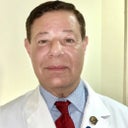Posted underBotox q&a
Would Botox Be Worth a Try to Stop Rosacea Flare Ups on my Cheeks/nose, Since Ive Tried Everything Else?
Answers (9)
From board-certified doctors and trusted medical professionals
Dr. Melissa Chiang, MD, FAAD

Dr. Melissa Chiang, MD, FAAD
Dermatologic Surgeon, Board Certified in Dermatology
Answer
Dr. Sabrina Fabi, MD

Dr. Sabrina Fabi, MD
Dermatologic Surgeon, Board Certified in Dermatology
Answer
Dr. Sam Naficy, MD, FACS

Dr. Sam Naficy, MD, FACS
Board Certified Facial Plastic Surgeon
Answer
Dr. Nelson Lee Novick, MD

Dr. Nelson Lee Novick, MD
Dermatologic Surgeon, Board Certified in Dermatology
Answer
Dr. Michael I. Echavez, MD

Dr. Michael I. Echavez, MD
Board Certified Facial Plastic Surgeon
Answer
Dr. Peter J. Jenkin, MD, FAAD
Dr. Peter J. Jenkin, MD, FAAD
Dermatologic Surgeon, Board Certified in Dermatology
Answer
Dr. Hratch Karamanoukian, MD, FACS
Dr. Hratch Karamanoukian, MD, FACS
Board Certified Phlebologist
Answer
Dr. F. Victor Rueckl, MD (in memoriam)
Dr. F. Victor Rueckl, MD (in memoriam)
Board Certified Dermatologist
Answer
More Botox Questions
See all Botox Q&AWE SEND PRETTY
EMAILS
What’s trending? Who’s turning heads? Which TikTok myths need busting? We’ve got you. No fluff, no gatekeeping—just real talk. Get our free, unfiltered newsletter.